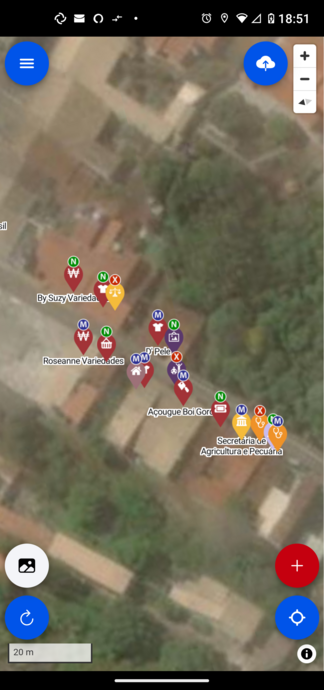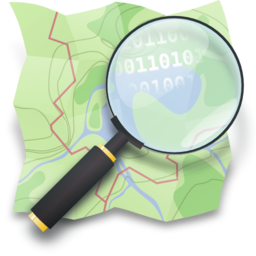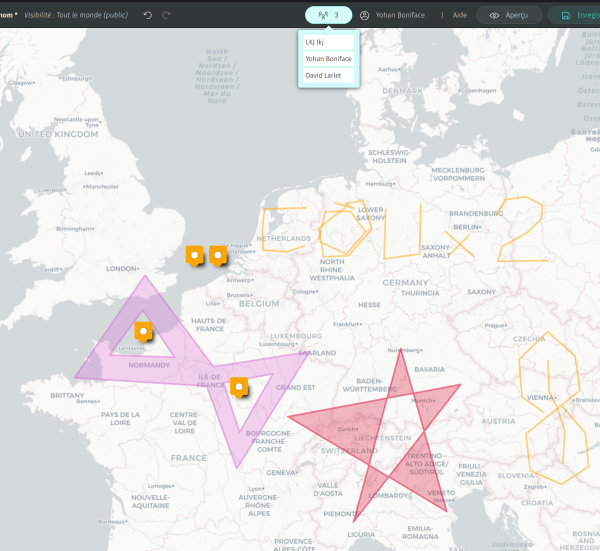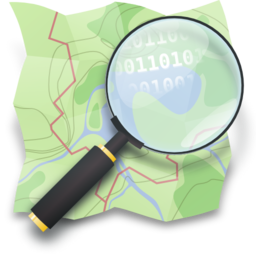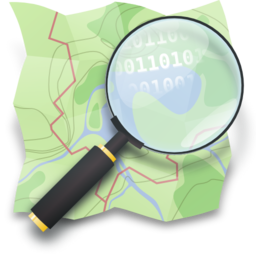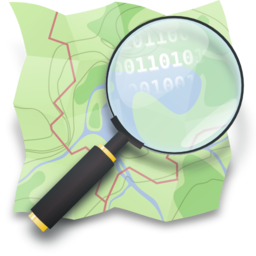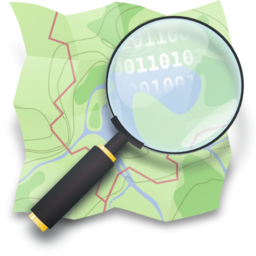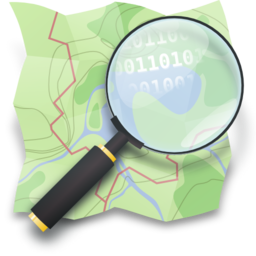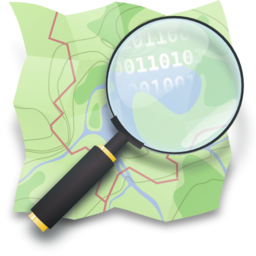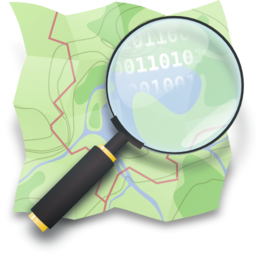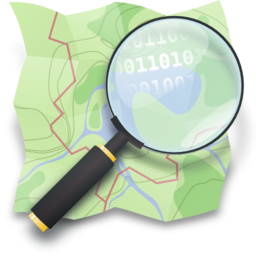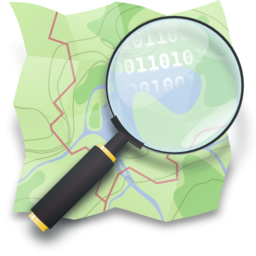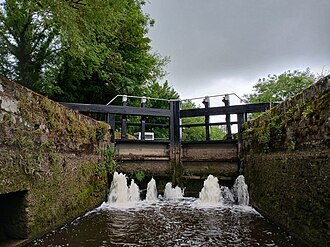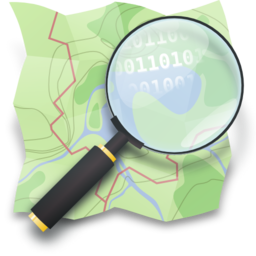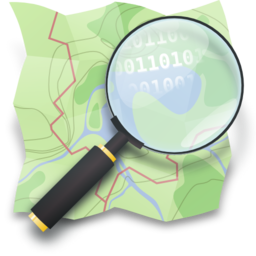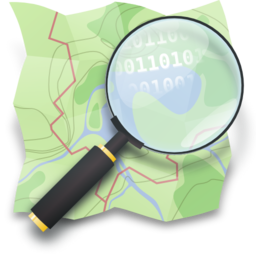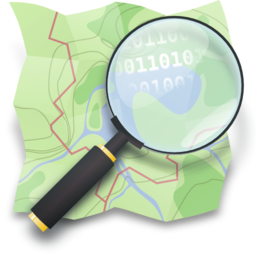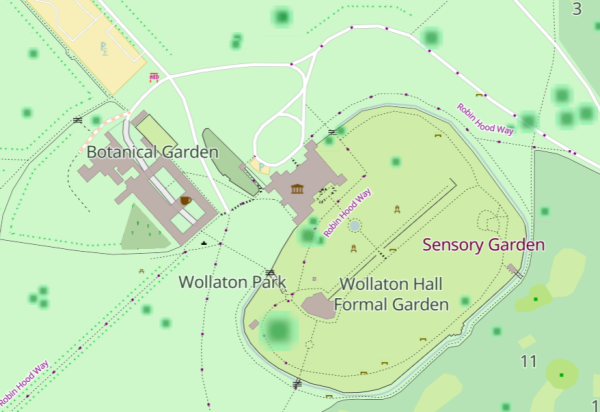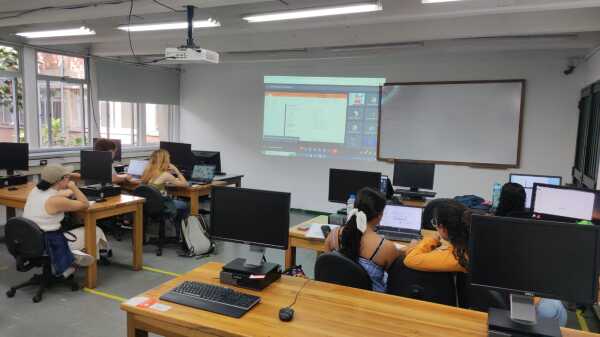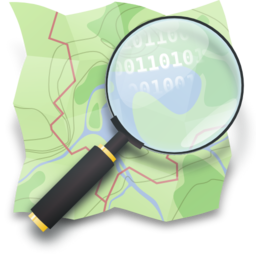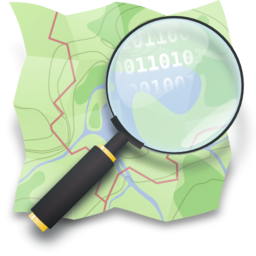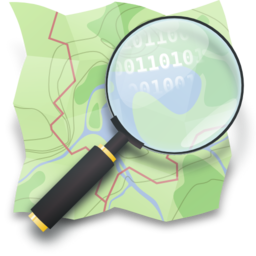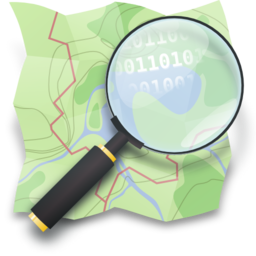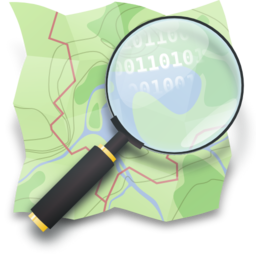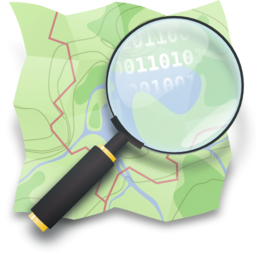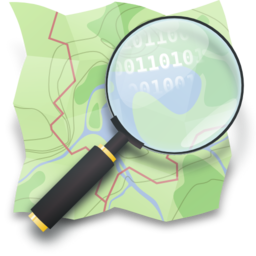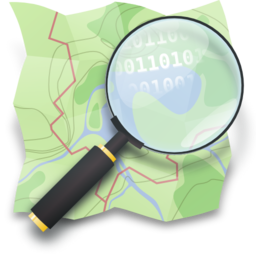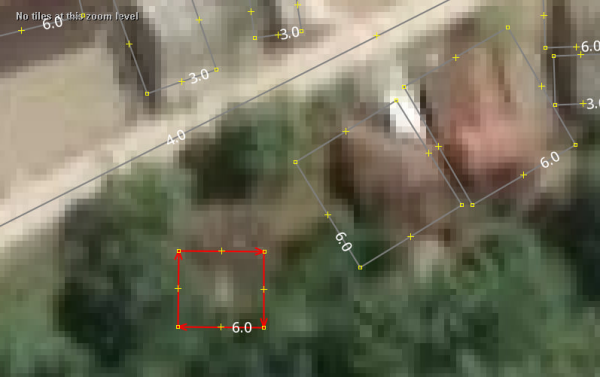Now, let’s talk about English.
Why is English so widespread today?
Why is it such a dominant and influential language?
Is it because it’s superior?
Absolutely not. It is because English is the language of empire.
I bear no grudge against the English language itself—but I do feel profound sorrow and regret over this historical reality.
Had a different Asian country colonized yours, perhaps you would now be speaking that language instead of English—or perhaps a language even less prominent globally.
Please understand this: English is not dominant because it is better, easier to learn, or inherently more suited to communication.
Have you ever imagined a foreigner—someone who speaks a different language—breaking into a cold sweat as they struggle to understand the language and follow the flow of conversation, all while feeling overwhelmed by unfamiliar social behaviors and caught in a situation where loud, rapid chatter goes on, and on, and on, without a moment to catch up or make sense of what’s going on?
Some of you say, “No one is stopping you from speaking your native language.”
Some of you say, “Don’t just stay in your local community—come out and join the global conversation.”
But only those who are confident in their English, or those like me who cannot bear the frustration of silence, make the effort to break through the language barrier and speak here.
Would you say to that person, “No one’s stopping you—try to jump in,” or “It’s okay, just speak in your native language”?
Wouldn’t that, in fact, feel even more humiliating than simply walking away?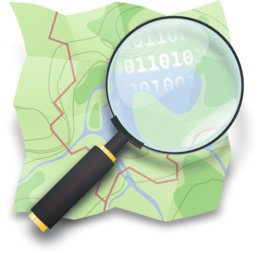
Why is English so widespread today?
Why is it such a dominant and influential language?
Is it because it’s superior?
Absolutely not. It is because English is the language of empire.
I bear no grudge against the English language itself—but I do feel profound sorrow and regret over this historical reality.
Had a different Asian country colonized yours, perhaps you would now be speaking that language instead of English—or perhaps a language even less prominent globally.
Please understand this: English is not dominant because it is better, easier to learn, or inherently more suited to communication.
Have you ever imagined a foreigner—someone who speaks a different language—breaking into a cold sweat as they struggle to understand the language and follow the flow of conversation, all while feeling overwhelmed by unfamiliar social behaviors and caught in a situation where loud, rapid chatter goes on, and on, and on, without a moment to catch up or make sense of what’s going on?
Some of you say, “No one is stopping you from speaking your native language.”
Some of you say, “Don’t just stay in your local community—come out and join the global conversation.”
But only those who are confident in their English, or those like me who cannot bear the frustration of silence, make the effort to break through the language barrier and speak here.
Would you say to that person, “No one’s stopping you—try to jump in,” or “It’s okay, just speak in your native language”?
Wouldn’t that, in fact, feel even more humiliating than simply walking away?

Western-centric worldview...
Now, let’s talk about English. Why is English so widespread today? Why is it such a dominant and influential language? Is it because it’s superior? Absolutely not. It is because English is the language of empire.OpenStreetMap
One person is sanding down a rusty gate,
Another is painting over the rust,
Yet another is attaching a new handle to the corroded gate,
Some are even building an entirely new gate to replace the old, rusted one
And a few are wondering, Why are they d…
Another is painting over the rust,
Yet another is attaching a new handle to the corroded gate,
Some are even building an entirely new gate to replace the old, rusted one
And a few are wondering, Why are they d…
The world of OSM, where everyone just does their own thing without coordination or adjustment.
It sometimes feels like OSM is of the West, by the West, for the West.
Over the past 20 years, OpenStreetMap has become one of the worlds largest and most impactful crowdsourcing projects.
After one more year of French administration funding (thank you!), we are so proud to have released versions 3.X of uMap since last April. Since then, we made a couple of adjustments to ease the deployment of that new version.
Cartographie OSM des dommages du bâti à Mayotte après Chido - nouveaux indicateurs et premiers résultats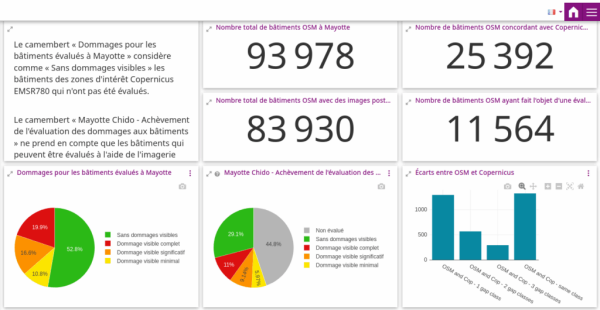

Cartographie OSM des dommages du bâti à Mayotte après Chido - nouveaux indicateurs et premiers résultats
Cet article de blog a été publié à lorigine sur ce site web et a déjà été mentionné par WeeklyOSM.OpenStreetMap
Magnetic Yokes Machine Magnetic Particle Testing (MPT) is one of the most widely used non-destructive testing (NDT) methods for the detection of surface and near-surface flaws in ferromagnetic materials. The Magnetic Yoke Machine is considered one of the more popular tools used for MPT due to its portability, ease of operation, and efficacy. What is a Magnetic Yoke Machine? A Magnetic Yoke is a handheld or portable device that generates a magnetic field using either AC (Alternating Current) or DC (Direct Current). It consists of a U-shaped or C-shaped core with adjustable legs and an electromagnetic coil. Generally, once energized, it induces a magnetic field into the test piece, allowing the inspectors to check for cracks, seams, and other defects using magnetic particles. Types of Magnetic Yokes AC Yokes: Best for detecting surface cracks due to shallow penetration. DC Yokes: These offer deeper penetration and allow for identification of subsurface flaws. Permanent Magnetic Yokes: These employ strong magnets instead of electricity and are suited for hazardous environments. Electromagnetic Yokes: These require power (battery or mains) and offer adjustable strength. Advantages of Magnetic Yokes Portable and lightweight: Suitable for carrying anywhere for site inspection. Fast Setup: No additional preparations are needed. Versatile: Suitable for flat, curved, or irregular surfaces. Cost-effective: In contrast to more sophisticated NDT equipment, it is an inexpensive option. How to Use a Magnetic Yoke? Clean All Surfaces – To do this, you need to remove rust, paint, and dirt. Apply Magnetic Particles – You spray dry or wet particles. Place the Yoke – Put the legs over the area to be inspected. Magnetize and Inspect – Turn on the yoke and look for accumulation of particles at defects. Demagnetizer – Preventing residual magnetism. Conclusion The Magnetic Yoke Machine is portable, easy to use and economic test equipment for detecting surface cracks on ferromagnetic materials. It is best suited for inspection in welding, aerospace and manufacturing, ensuring quicker and more confident defect detection thereafter.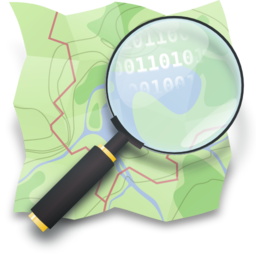

Magnetic Yoke Machine
Magnetic Yokes Machine Magnetic Particle Testing (MPT) is one of the most widely used non-destructive testing (NDT) methods for the detection of surface and near-surface flaws in ferromagnetic materials.OpenStreetMap
Today is a special day—my birthday. I woke up feeling grateful and hopeful. Another year of life is not something to take for granted. I feel happy, not just because it’s a celebration, but because I’ve come a long way, and I’m ready for more. Birthdays are not just about cake, candles, or greetings. They are about reflection, growth, and new beginnings.
As I look ahead, I’m deeply motivated to grow—not just in age, but in wisdom, character, and capacity. I want to build myself professionally and personally. My journey so far has been full of lessons, and I know there is much more to learn. I believe in continuous improvement, and that belief fuels my ambition to keep pushing forward.
This year, my focus is on professional development—gaining new skills, strengthening what I already know, and becoming more confident in my work. I plan to seek opportunities for learning, whether through training, mentorship, or real-life experience. I want to become more capable, resourceful, and impactful in everything I do.
At the same time, I also want to grow emotionally and mentally. Maturity isn’t just about work—it’s also about how we treat people, how we handle challenges, and how we understand ourselves.
So, on this birthday, I’m not just celebrating the past—I’m preparing for the future. I feel proud of the person I am becoming. I will keep dreaming, working hard, and building the life I envision.
Here’s to a new year of growth, purpose, and becoming the best version of myself.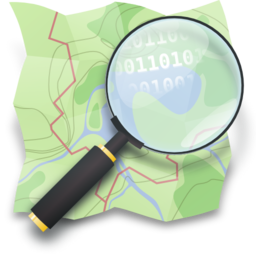
As I look ahead, I’m deeply motivated to grow—not just in age, but in wisdom, character, and capacity. I want to build myself professionally and personally. My journey so far has been full of lessons, and I know there is much more to learn. I believe in continuous improvement, and that belief fuels my ambition to keep pushing forward.
This year, my focus is on professional development—gaining new skills, strengthening what I already know, and becoming more confident in my work. I plan to seek opportunities for learning, whether through training, mentorship, or real-life experience. I want to become more capable, resourceful, and impactful in everything I do.
At the same time, I also want to grow emotionally and mentally. Maturity isn’t just about work—it’s also about how we treat people, how we handle challenges, and how we understand ourselves.
So, on this birthday, I’m not just celebrating the past—I’m preparing for the future. I feel proud of the person I am becoming. I will keep dreaming, working hard, and building the life I envision.
Here’s to a new year of growth, purpose, and becoming the best version of myself.

Diary Entry – May 29, 2025
Today is a special day—my birthday. I woke up feeling grateful and hopeful. Another year of life is not something to take for granted. I feel happy, not just because its a celebration, but because I’ve come a long way, and I’m ready for more.OpenStreetMap
This is something I encountered mapping bike infrastructure in the Austrian town of Neuhofen an der Krems: what one might assume is a continuation of a shared bike/pedestrian path over a pretty unimportant side road is actually a legal trap for cycli…
My journey as an OpenStreetMap contributor began in 2022, with a humble yet impactful project: mapping roads in Mugu, Humla, and Jumla—three of Nepal’s most remote and mountainous districts. Since then, I’ve grown into an active mapper, dedicated validator, and proud member of the global OSM community. In 2023, I was recognized as an OSM Guru and listed among the top contributors, a reflection of my deep passion and consistency in open geodata contribution.
Areas of Focus My primary interest lies in mapping buildings and roadways, especially in critical and under-mapped areas. I’ve also actively contributed to tools like MapRoulette and MapSwipe, which help bring micro-edits and mobile contributions to the mapping ecosystem.
Highlighted Contributions “Map Roads, Make Your Way” Project Recognized as a top-quality mapper, I contributed significantly to this project—led by HOT, Open Asia Pacific Hub, KIRDARC, and OSM Nepal—focusing on mapping roads in Humla, Jumla, and Dolpa. This initiative was a pivotal moment for me, helping improve accessibility in some of the most remote regions of Nepal.
Digital and Spatial Technologies for Anticipatory Action Volunteered in this 5-day event organized by NAXA Nepal, where we mapped roads, waterways, buildings, and land use across six municipalities. Using ESRI imagery on the HOT Tasking Manager, we enhanced maps to support community resilience and disaster preparedness. We focused on: Mapping open spaces critical for evacuation and aid Digitizing health posts, schools, power lines Improving road networks and land use classifications
Global Solidarity Through Mapping Solidarity Mapathon for Myanmar (HOT) Climate Change Challenge with HOT, TOMTOM, Open Asia Hub Participated in multiple Kathmandu University mapathons—both as a mapper and organizer, including events under NEPGEOM
Building the OSM Community Beyond mapping, I’m passionate about bringing new faces to OSM. As part of Kathmandu University, I’ve helped organize several mapping events to inspire students and introduce them to open mapping tools, showing them the power of maps in building resilient, informed communities.
Final Thoughts OpenStreetMap has empowered me to merge my technical skills with real-world impact—from mountain trails to urban resilience. Whether through tracing rooftops in Nepal or roadways in Papua New Guinea, I see mapping as a meaningful act of solidarity and service. Thank you to everyone in the OSM and HOT communities for your support, collaboration, and inspiration. I’m looking forward to more shared efforts in making the world a better-mapped place. Happy Mapping! — siwangi02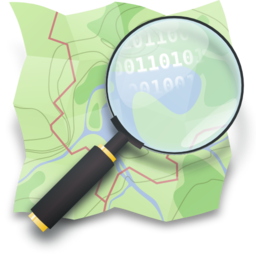
Areas of Focus My primary interest lies in mapping buildings and roadways, especially in critical and under-mapped areas. I’ve also actively contributed to tools like MapRoulette and MapSwipe, which help bring micro-edits and mobile contributions to the mapping ecosystem.
Highlighted Contributions “Map Roads, Make Your Way” Project Recognized as a top-quality mapper, I contributed significantly to this project—led by HOT, Open Asia Pacific Hub, KIRDARC, and OSM Nepal—focusing on mapping roads in Humla, Jumla, and Dolpa. This initiative was a pivotal moment for me, helping improve accessibility in some of the most remote regions of Nepal.
Digital and Spatial Technologies for Anticipatory Action Volunteered in this 5-day event organized by NAXA Nepal, where we mapped roads, waterways, buildings, and land use across six municipalities. Using ESRI imagery on the HOT Tasking Manager, we enhanced maps to support community resilience and disaster preparedness. We focused on: Mapping open spaces critical for evacuation and aid Digitizing health posts, schools, power lines Improving road networks and land use classifications
Global Solidarity Through Mapping Solidarity Mapathon for Myanmar (HOT) Climate Change Challenge with HOT, TOMTOM, Open Asia Hub Participated in multiple Kathmandu University mapathons—both as a mapper and organizer, including events under NEPGEOM
Building the OSM Community Beyond mapping, I’m passionate about bringing new faces to OSM. As part of Kathmandu University, I’ve helped organize several mapping events to inspire students and introduce them to open mapping tools, showing them the power of maps in building resilient, informed communities.
Final Thoughts OpenStreetMap has empowered me to merge my technical skills with real-world impact—from mountain trails to urban resilience. Whether through tracing rooftops in Nepal or roadways in Papua New Guinea, I see mapping as a meaningful act of solidarity and service. Thank you to everyone in the OSM and HOT communities for your support, collaboration, and inspiration. I’m looking forward to more shared efforts in making the world a better-mapped place. Happy Mapping! — siwangi02

My OSM Journey: From the Mountains of Nepal to Global Mapping Communities
My journey as an OpenStreetMap contributor began in 2022, with a humble yet impactful project: mapping roads in Mugu, Humla, and Jumla—three of Nepals most remote and mountainous districts.OpenStreetMap
Testing, Heading
Subheading, Subheading
- List
- List continued
Hello World!
I just completed my first university GIS course and I absolutely love mapping. The course enabled me to contribute to the Humanitarian OpenStreetMap team. This experience is excellent and I am thankful to sharpen my digitizing skills while helping others.
This Diary feature is new to me and I’m not sure what it does. Good to experiment with! :)
When I first received the email notifying me of my selection for the YouthMappers Leadership Fellowship 2024 in Thailand, it was a surreal moment. I was doing my assignments all frustrated but suddenly when the notification popped up, and I couldn’t contain my emotions. I jumped with joy, overwhelmed by the thought of being chosen for such an incredible opportunity. That email was the start of an unforgettable journey—one that would take me to new places, connect me with passionate individuals, and leave me with memories I’ll cherish forever. The dream of the dreamer started since then. The preparation for the fellowship began months in advance. YouthMappers, a global community of students, researchers, educators, and scholars that use public geospatial technologies to highlight and directly address development and environmental challenges worldwide ensured we were well-prepared with pre-departure sessions and constant communication through emails and WhatsApp. They guided us every step of the way, taking care of us with unmatched warmth and care. From learning how to say “Sawadike” (hello) and “Khapunka” (thank you) in Thai, to planning and packing for the trip, every moment was filled with excitement. The day of departure was momentous—my first international flight, passport in hand, and butterflies in my stomach. Along with my Nepali peers, we clicked countless photos at the airport, thrilled to embark on this journey. As our flight landed in Bangkok, the sparkling city lights welcomed us to a country that truly never sleeps. Angela, our warm and wonderful guide, greeted us at the airport, setting the tone for an amazing experience.
Our first day in Thailand was magical. Staying in a cozy hotel, enjoying delicious breakfasts, and exploring the vibrant streets around us felt like stepping into a dream. As other fellows from across the globe arrived, the excitement only grew. The orientation session was our first formal introduction to the program, the YouthMappers team, and the 27 fellows from diverse countries. I was fascinated by their unique names and stories—from America to Zuliatu, everyone brought something special to the table. That evening, over dinner, we bonded with the organizers and faculty of YouthMappers. Sharing laughs, stories, and conversations with people who had achieved so much in their respective fields was inspiring. This sense of community and collaboration is, I believe, the heart of the open-data movement.
The next day, we dressed in formals and headed to the auditorium for official sessions. We learned about the structure of YouthMappers, its global chapters, partnerships with organizations like USAID, and its alignment with the Sustainable Development Goals (SDGs). I was assigned to the SDG 11 group: Sustainable Cities and Communities. This session was a highlight for me, as I eagerly collaborated with my team and dived deep into discussions. Our first travel destination was the breathtaking Wat Pho Temple, where we soaked in the culture, clicked countless pictures, and marveled at the beauty of Thailand. A serene boat ride followed, offering mesmerizing views of the city. While trying seafood at dinner wasn’t quite my cup of tea, the experience added to the adventure.
One of the most impactful moments was a heartfelt conversation with Angela. She shared stories of the struggles faced by women in rural Thailand, particularly around inequality and exploitation. Her resilience and wisdom left a deep mark on me. Angela’s words reinforced the importance of supporting marginalized groups and working tirelessly for equality and inclusion. The third day of our fellowship was a transformative one, as we left the chaos of Bangkok for the tranquility of Bang Saen Beach. Settling in at the beautiful Bang Saen Beach Resort, I quickly joined my team to dive into OpenStreetMap (OSM) and flood mapping. The hands-on experience, working with passionate mappers from around the world, was thrilling, but a moment of self-doubt crept in. It was during this time that Patricia, a beacon of wisdom and energy, helped me shift my perspective and reignite my determination. Her encouragement allowed me to embrace the process with clarity and purpose, carrying me forward through the fellowship with renewed vigour. As we moved into fieldwork, I was honoured to lead our team, thanks to the trust of our group leader, Nuala Cowan. The day was filled with collaboration and teamwork, where each member brought their best effort, and we completed tasks with enthusiasm. The sessions that followed further enriched our knowledge, focusing on project leadership, gender inclusion, and the power of communication. The final days were a whirlwind of collaboration, innovation, and reflection, culminating in our impactful flood mapping project. Presenting our work, knowing how much we’d achieved together, filled me with pride. As I said goodbye to my fellow participants, I left with not just memories, but with invaluable lessons on leadership, mapping, and the importance of community-driven solutions.
The final day was a mix of excitement and nerves. Our SDG 11 team, focusing on sustainable cities and flood mapping, presented our project on Si Racha, Chan Buri, an area recently impacted by flash floods on March 19, 2024.We analyzed the flood’s impact by mapping the inundation area, affected buildings, highways, health facilities, educational institutions, and approximate affected populations. Over one night, our team made an impressive 5,223 edits to map the previously unmapped Si Racha area.
Our final presentation was a success, followed by emotional reflections on our journeys. After a quick lunch, we headed to a travel destination for some shopping and wrapped up the day back at the hotel, saying bittersweet goodbyes to our fellows before our morning flight.
Reflecting on these incredible nine days, I still feel deeply emotional. It wasn’t just about the joy of the experience but also the immense learning and personal growth. This fellowship was truly a dream come true. I vividly remember my first year of college when we were introduced to OpenStreetMap. While exploring further, I came across YouthMappers and their Leadership Fellowship. From that very moment, I aspired to be part of it. Fast forward four years, and here I am, writing about my own Leadership Fellowship experience. Life truly is amazing. When I look back to myself during my first year of college where we were introduced to OSM, I was deeply inspired by the richness of OSM datasets and their humanitarian purpose for the community. It stuck with me that this was something I never wanted to leave behind. Over the years, I have contributed to impactful humanitarian projects such as the Turkey-Syria mapping initiative and the Jajarkot earthquake response. These projects have made me feel like I’m physically present to help communities in need. To date, I’ve made an incredible 632,637 edits, each one shaping someone’s future somewhere in the world. This realization motivates me to continue contributing and making a difference. Also, thanks to my driving force for contribution that led me to the YouthMappers Leadership Fellowship 2024. This fellowship has taught me so much—more than I could have imagined. Overcoming language barriers and navigating cultural differences were challenging at times, but they also enriched the experience. As Silvana from SDG 11 wisely said, “We may not understand each other’s languages and cultures, but what we do understand is the language of cartography.” This quote resonates deeply with me and reminds me of the power of our shared purpose as mappers. Looking back, I realize how these lessons have shaped me. A conversation with Patricia stands out vividly—she shared that in life, we often search for what we lack by comparing ourselves to others, forgetting the treasures we already hold, that wisdom has stayed with me. This experience has also deepened my appreciation for the impact of mapping. Every edit we make shapes someone’s future somewhere on this planet. It’s not just about learning to edit—it’s about connecting with communities, fostering inclusivity, and leading with love and purpose. I aspire to pass on my knowledge to the next generation in the most inclusive and diverse way possible, working closely with communities and telling their stories through leadership. This dream opportunity has transformed me in ways I am indebted towards YouthMappers and our chapter Geomatics Engineering Students Association Nepal (GESAN) and will cherish forever. Thank you, YouthMappers, for making it all possible!
First Impressions and New Connections
Our first day in Thailand was magical. Staying in a cozy hotel, enjoying delicious breakfasts, and exploring the vibrant streets around us felt like stepping into a dream. As other fellows from across the globe arrived, the excitement only grew. The orientation session was our first formal introduction to the program, the YouthMappers team, and the 27 fellows from diverse countries. I was fascinated by their unique names and stories—from America to Zuliatu, everyone brought something special to the table. That evening, over dinner, we bonded with the organizers and faculty of YouthMappers. Sharing laughs, stories, and conversations with people who had achieved so much in their respective fields was inspiring. This sense of community and collaboration is, I believe, the heart of the open-data movement.
Learning, Exploring, and Growing
The next day, we dressed in formals and headed to the auditorium for official sessions. We learned about the structure of YouthMappers, its global chapters, partnerships with organizations like USAID, and its alignment with the Sustainable Development Goals (SDGs). I was assigned to the SDG 11 group: Sustainable Cities and Communities. This session was a highlight for me, as I eagerly collaborated with my team and dived deep into discussions. Our first travel destination was the breathtaking Wat Pho Temple, where we soaked in the culture, clicked countless pictures, and marveled at the beauty of Thailand. A serene boat ride followed, offering mesmerizing views of the city. While trying seafood at dinner wasn’t quite my cup of tea, the experience added to the adventure.
Conversations That Inspire
One of the most impactful moments was a heartfelt conversation with Angela. She shared stories of the struggles faced by women in rural Thailand, particularly around inequality and exploitation. Her resilience and wisdom left a deep mark on me. Angela’s words reinforced the importance of supporting marginalized groups and working tirelessly for equality and inclusion. The third day of our fellowship was a transformative one, as we left the chaos of Bangkok for the tranquility of Bang Saen Beach. Settling in at the beautiful Bang Saen Beach Resort, I quickly joined my team to dive into OpenStreetMap (OSM) and flood mapping. The hands-on experience, working with passionate mappers from around the world, was thrilling, but a moment of self-doubt crept in. It was during this time that Patricia, a beacon of wisdom and energy, helped me shift my perspective and reignite my determination. Her encouragement allowed me to embrace the process with clarity and purpose, carrying me forward through the fellowship with renewed vigour. As we moved into fieldwork, I was honoured to lead our team, thanks to the trust of our group leader, Nuala Cowan. The day was filled with collaboration and teamwork, where each member brought their best effort, and we completed tasks with enthusiasm. The sessions that followed further enriched our knowledge, focusing on project leadership, gender inclusion, and the power of communication. The final days were a whirlwind of collaboration, innovation, and reflection, culminating in our impactful flood mapping project. Presenting our work, knowing how much we’d achieved together, filled me with pride. As I said goodbye to my fellow participants, I left with not just memories, but with invaluable lessons on leadership, mapping, and the importance of community-driven solutions.
The final day was a mix of excitement and nerves. Our SDG 11 team, focusing on sustainable cities and flood mapping, presented our project on Si Racha, Chan Buri, an area recently impacted by flash floods on March 19, 2024.We analyzed the flood’s impact by mapping the inundation area, affected buildings, highways, health facilities, educational institutions, and approximate affected populations. Over one night, our team made an impressive 5,223 edits to map the previously unmapped Si Racha area.
Our final presentation was a success, followed by emotional reflections on our journeys. After a quick lunch, we headed to a travel destination for some shopping and wrapped up the day back at the hotel, saying bittersweet goodbyes to our fellows before our morning flight.
A Life-Changing Experience
Reflecting on these incredible nine days, I still feel deeply emotional. It wasn’t just about the joy of the experience but also the immense learning and personal growth. This fellowship was truly a dream come true. I vividly remember my first year of college when we were introduced to OpenStreetMap. While exploring further, I came across YouthMappers and their Leadership Fellowship. From that very moment, I aspired to be part of it. Fast forward four years, and here I am, writing about my own Leadership Fellowship experience. Life truly is amazing. When I look back to myself during my first year of college where we were introduced to OSM, I was deeply inspired by the richness of OSM datasets and their humanitarian purpose for the community. It stuck with me that this was something I never wanted to leave behind. Over the years, I have contributed to impactful humanitarian projects such as the Turkey-Syria mapping initiative and the Jajarkot earthquake response. These projects have made me feel like I’m physically present to help communities in need. To date, I’ve made an incredible 632,637 edits, each one shaping someone’s future somewhere in the world. This realization motivates me to continue contributing and making a difference. Also, thanks to my driving force for contribution that led me to the YouthMappers Leadership Fellowship 2024. This fellowship has taught me so much—more than I could have imagined. Overcoming language barriers and navigating cultural differences were challenging at times, but they also enriched the experience. As Silvana from SDG 11 wisely said, “We may not understand each other’s languages and cultures, but what we do understand is the language of cartography.” This quote resonates deeply with me and reminds me of the power of our shared purpose as mappers. Looking back, I realize how these lessons have shaped me. A conversation with Patricia stands out vividly—she shared that in life, we often search for what we lack by comparing ourselves to others, forgetting the treasures we already hold, that wisdom has stayed with me. This experience has also deepened my appreciation for the impact of mapping. Every edit we make shapes someone’s future somewhere on this planet. It’s not just about learning to edit—it’s about connecting with communities, fostering inclusivity, and leading with love and purpose. I aspire to pass on my knowledge to the next generation in the most inclusive and diverse way possible, working closely with communities and telling their stories through leadership. This dream opportunity has transformed me in ways I am indebted towards YouthMappers and our chapter Geomatics Engineering Students Association Nepal (GESAN) and will cherish forever. Thank you, YouthMappers, for making it all possible!
If anyone who want to edit Indonesian maps, I recommend using BHUMI ATR/BPN aerial imagery data as source. You may see the links from my last 2 months of renewed editing career of OpenStreetMap.
Performance testing vector tiles
Ive undertaken the task of mapping Inveralmond Industrial Estate, which lies close to my location but is currently not mapped in any great detail.
The Community Bonding Period officially wrapped up on June 1, and the coding phase is already off to a solid start.
Recently, I needed to open my OpenStreetMap profile—just to right-click and save my own profile picture for use on another platform.
I stumbled across a website which hosts every single Soviet military map 1:200k from 1985.
As OpenStreetMap becomes a central part of global mapping infrastructure, it’s worth asking:
Are corporations offering as much or more as they are getting from their OSM involvement?
Some corporations benefit enormously from OSM using it to build commercial services, run logistics, and analyze market data. But these same companies often have access to large, rich datasets, especially from telemetry and user behavior, that are far beyond what the average contributor can collect.
If shared, such data could dramatically improve OSM’s accuracy, completeness, and utility. But how much of this data is actually being shared?
There’s a tension here between open knowledge and proprietary advantage. While some companies do contribute back through edits, funding, or tools, the scale of these contributions doesn’t always match the value extracted.
This leads to deeper questions: - Is the current model of corporate engagement with OSM sustainable? - Are the benefits of the open model being eroded when sharing isn’t reciprocal? - Could new norms or frameworks encourage deeper, more equitable collaboration?
The OSM community thrives on openness, transparency, and volunteerism. As more private actors join, the long-term health of the ecosystem may depend on whether those values are upheld not just by individuals, but by corporations as well.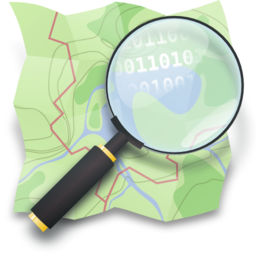
Are corporations offering as much or more as they are getting from their OSM involvement?
Some corporations benefit enormously from OSM using it to build commercial services, run logistics, and analyze market data. But these same companies often have access to large, rich datasets, especially from telemetry and user behavior, that are far beyond what the average contributor can collect.
If shared, such data could dramatically improve OSM’s accuracy, completeness, and utility. But how much of this data is actually being shared?
There’s a tension here between open knowledge and proprietary advantage. While some companies do contribute back through edits, funding, or tools, the scale of these contributions doesn’t always match the value extracted.
This leads to deeper questions: - Is the current model of corporate engagement with OSM sustainable? - Are the benefits of the open model being eroded when sharing isn’t reciprocal? - Could new norms or frameworks encourage deeper, more equitable collaboration?
The OSM community thrives on openness, transparency, and volunteerism. As more private actors join, the long-term health of the ecosystem may depend on whether those values are upheld not just by individuals, but by corporations as well.

Are corporations acting reciprocally with the OSM community?
As OpenStreetMap becomes a central part of global mapping infrastructure, its worth asking:OpenStreetMap
My parents had rented a barge to explore the Barrow Navigation in Ireland for a week. I joined them on three days to capture water-level imagery with my GoPro (and to catch up with them as well). There are unfortunately 1.
At work, I started creating a real pedestrian routing that uses sidewalks rather than the middle of the road (unlike most pedestrian routing software nowadays). This is necessary for calculating safe routes to and from schools.
10 years + a few days ago, we held the White House Mapathon.
got exams will return
OpenStreetMap is a map of the world, created by people like you and free to use under an open license.
OBDL but governments like Hungary (homophobia), Isreal (genocide), groups like the Republican Party (every stripe of bigotry imaginable) and companies like Tesla (same) are blanket excluded from using, copying, redistributing or accessing OSM data in any way, shape or form?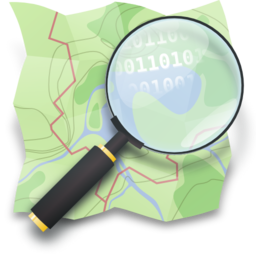

What if the OBDL, but explicitly inclusive and antifascist?
OBDL but governments like Hungary (homophobia), Isreal (genocide), groups like the Republican Party (every stripe of bigotry imaginable) and companies like Tesla (same) are blanket excluded from using, copying, redistributing or accessing OSM data in…OpenStreetMap
My name is Saïd Abou Kharroub, and I’m truly honored to be nominated as a candidate for a 2025 HOT voting member. I’m excited to share a bit about my journey with HOT, my current work in Lebanon, and my aspirations as a voting member.
To me, HOT shows the incredible power of people working together with open data in humanitarian crises. It’s amazing how a global community can use mapping to make a real, life-saving difference. What I really appreciate is HOT’s dedication to empowering local communities and building a space where knowledge and skills are freely shared.
My involvement with HOT became very personal and hands-on through the “Lebanon: Conflict - October 2024” project. I got involved when I arrived in Lebanon in January 2025, taking on the role of Lebanon Local Consultant for HOT’s H2H funded project, “Collaborative Approaches to Mapping Damage in Lebanon.” I’ve also been a strategic advisor for CivAPI.com, a data API provider that includes OpenStreetMap layers like buildings, roads, and infrastructure. This advisory role has given me an even deeper understanding of how crucial data provision is in humanitarian and development work.
In my role in Lebanon, I’ve focused on coordinating local data efforts, engaging with important partners, and advising on data protection, especially given the local context. This work includes:
Organizing and hosting local mapathons to grow the OpenStreetMap community and fill important data gaps for humanitarian response. We’ve already held our first mapathons with the Lebanon Reforestation Initiative, Beirut Arab University and are planning the second with the Beirut Urban Lab.
Working closely with HOT staff and humanitarian partners to address specific infrastructure gaps, often responding to requests from groups like UNOSAT.
Helping HOT staff review damage assessment methods, aiming to match different approaches (like automated satellite analysis versus manual visual checks) to various situations, and making sure local needs are heard.
Actively connecting with local data coordinators and partners, providing updates on the situation, and leading data protection training, along with other OpenStreetMap use and editing workshops.
Identifying what data is needed and what risks exist when collecting information on critical infrastructure for humanitarian needs, such as health sites, schools, and heritage sites, based on feedback from stakeholders.
My background in international development, peacebuilding, community engagement, and project management, as seen on my LinkedIn profile, has given me a strong grasp of complex humanitarian situations and why local, ethical data approaches are so important. My experience managing multi-stakeholder projects, facilitating cross-cultural collaboration, and conducting detailed analytical research directly informs my work with HOT in Lebanon.
I want to become a voting member because I believe I can bring a crucial on-the-ground perspective from an active crisis zone. This, combined with my experience in community building, data coordination, ethical data practices, and my advisory role with a data API provider using OpenStreetMap, can contribute to HOT’s governance and strategic direction. I’m eager to play a more formal part in shaping the future of an organization that’s making such a significant impact.
As a voting member, I see my most important responsibility as being a good steward of HOT’s mission and values, especially championing localization and ethical data practices. This means truly listening to the many voices in our global community, particularly those directly affected by crises. It means making informed decisions that prioritize effective and ethically sound actions, and ensuring everything we do is transparent and accountable. It’s about upholding what makes HOT unique and effective.
I plan to get more deeply involved by actively participating in discussions and decisions, sharing what I’ve learned from my project in Lebanon, and advocating for approaches that truly empower local communities to lead their own mapping initiatives. I’m especially interested in joining the Community Working Group to help boost local engagement and the Data Quality and Validation Working Group to help ensure robust data practices.
One of HOT’s biggest challenges, as I see it, is making sure our impact is truly local and sustainable beyond immediate crisis response, and that strong data protection is built into everything we do. While global coordination is vital, it’s crucial to foster strong local OpenStreetMap communities who can independently handle their own mapping needs and understand the ethical side of data collection. I believe I can help with this by using my direct experience in setting up and nurturing local mapping efforts in Lebanon, sharing insights on practical data protection in sensitive areas, and pushing for resources that support long-term local capacity building and self-sufficiency.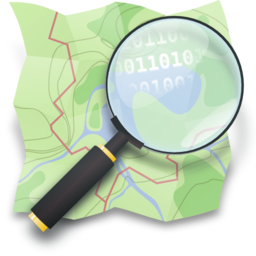
To me, HOT shows the incredible power of people working together with open data in humanitarian crises. It’s amazing how a global community can use mapping to make a real, life-saving difference. What I really appreciate is HOT’s dedication to empowering local communities and building a space where knowledge and skills are freely shared.
My involvement with HOT became very personal and hands-on through the “Lebanon: Conflict - October 2024” project. I got involved when I arrived in Lebanon in January 2025, taking on the role of Lebanon Local Consultant for HOT’s H2H funded project, “Collaborative Approaches to Mapping Damage in Lebanon.” I’ve also been a strategic advisor for CivAPI.com, a data API provider that includes OpenStreetMap layers like buildings, roads, and infrastructure. This advisory role has given me an even deeper understanding of how crucial data provision is in humanitarian and development work.
In my role in Lebanon, I’ve focused on coordinating local data efforts, engaging with important partners, and advising on data protection, especially given the local context. This work includes:
Organizing and hosting local mapathons to grow the OpenStreetMap community and fill important data gaps for humanitarian response. We’ve already held our first mapathons with the Lebanon Reforestation Initiative, Beirut Arab University and are planning the second with the Beirut Urban Lab.
Working closely with HOT staff and humanitarian partners to address specific infrastructure gaps, often responding to requests from groups like UNOSAT.
Helping HOT staff review damage assessment methods, aiming to match different approaches (like automated satellite analysis versus manual visual checks) to various situations, and making sure local needs are heard.
Actively connecting with local data coordinators and partners, providing updates on the situation, and leading data protection training, along with other OpenStreetMap use and editing workshops.
Identifying what data is needed and what risks exist when collecting information on critical infrastructure for humanitarian needs, such as health sites, schools, and heritage sites, based on feedback from stakeholders.
My background in international development, peacebuilding, community engagement, and project management, as seen on my LinkedIn profile, has given me a strong grasp of complex humanitarian situations and why local, ethical data approaches are so important. My experience managing multi-stakeholder projects, facilitating cross-cultural collaboration, and conducting detailed analytical research directly informs my work with HOT in Lebanon.
I want to become a voting member because I believe I can bring a crucial on-the-ground perspective from an active crisis zone. This, combined with my experience in community building, data coordination, ethical data practices, and my advisory role with a data API provider using OpenStreetMap, can contribute to HOT’s governance and strategic direction. I’m eager to play a more formal part in shaping the future of an organization that’s making such a significant impact.
As a voting member, I see my most important responsibility as being a good steward of HOT’s mission and values, especially championing localization and ethical data practices. This means truly listening to the many voices in our global community, particularly those directly affected by crises. It means making informed decisions that prioritize effective and ethically sound actions, and ensuring everything we do is transparent and accountable. It’s about upholding what makes HOT unique and effective.
I plan to get more deeply involved by actively participating in discussions and decisions, sharing what I’ve learned from my project in Lebanon, and advocating for approaches that truly empower local communities to lead their own mapping initiatives. I’m especially interested in joining the Community Working Group to help boost local engagement and the Data Quality and Validation Working Group to help ensure robust data practices.
One of HOT’s biggest challenges, as I see it, is making sure our impact is truly local and sustainable beyond immediate crisis response, and that strong data protection is built into everything we do. While global coordination is vital, it’s crucial to foster strong local OpenStreetMap communities who can independently handle their own mapping needs and understand the ethical side of data collection. I believe I can help with this by using my direct experience in setting up and nurturing local mapping efforts in Lebanon, sharing insights on practical data protection in sensitive areas, and pushing for resources that support long-term local capacity building and self-sufficiency.

2025 HOT Voting Member Nominee - Said Abou Kharroub Application
My name is Saïd Abou Kharroub, and Im truly honored to be nominated as a candidate for a 2025 HOT voting member. Im excited to share a bit about my journey with HOT, my current work in Lebanon, and my aspirations as a voting member.OpenStreetMap
The diameter_crown tag is fairly well used for trees. Itd be nice when showing trees to show larger ones as larger than smaller ones. One challenge is that the values can be a bit hit and miss. There are a couple of sorts of issues there:
Hi community
I’m sharing my application to become a Voting Member of HOT through this diary entry.
I’m sharing my application to become a Voting Member of HOT through this diary entry.
In the Halton region in Ontario Canada (and probably elsewhere), many two-way streets split with a boulevard are modelled as two one-way street segments (eg Way 286996210).
Hi everyone,
I’m Paula Villar, from Paraguay with a degree in architecture from the National University of Asunción. I completed my final graduation project as an internship at the Research, Development, and Innovation Center (CIDi) of FADA-UNA, where I participated in open mapping projects, territorial analysis, and the production of geospatial data. I also served as president of YouthMappers UNA (2022–2025), promoting student engagement in collaborative mapping activities.
What does HOT mean to me? HOT represents a community that brings open mapping and geospatial data closer to the people who need them to make informed decisions about their territories. Through projects like Atlas Urbano Paraguay (AUPy) and YouthMappers activities, I’ve seen how collaborative tools and open data help make underrepresented urban and rural realities visible.
I particularly value the spirit of collective work and the opportunity to contribute from different disciplines while learning and sharing with people from diverse backgrounds. Beyond technology, HOT provides a network of support and learning that strengthens territorial management, planning, and responses to local challenges.
How did I get involved in HOT? My introduction to HOT came through my involvement with YouthMappers UNA, where I led mapping activities with students from various fields. That experience, along with my graduation project at CIDi, allowed me to contribute to initiatives like AUPy and other efforts within the YouthMappers network, where open mapping played a central role.
During the internship, I engaged in the production of cartography and territorial analysis for municipalities in both national and cross-border contexts (with Brazil), applying open mapping methodologies and free and open source tools. I coordinated field-mapping campaigns, ran mapping workshops and urban characterizations, and integrated data on buildings, vegetation, and bodies of water.
Additional work included developing thematic maps and platforms for data visualization and download, prioritizing accessible, low-cost tools. I also led project outreach and trained volunteers in using OSM, JOSM, and Mapillary.
Through an institutional agreement between CIDi and KU Leuven (Catholic University of Leuven, Belgium), I supported master’s students in joint activities and academic-technical exchanges. In 2024, I was selected for the YouthMappers Leadership Fellowship in Thailand, where I further strengthened my open mapping and leadership skills.
These experiences have deepened my understanding of the value of open mapping, the importance of interdisciplinary collaboration, and the need to strengthen local and regional capacities.
Why do I want to become a voting member? I hope to bring a practical perspective grounded in the reality of those working with open data in contexts similar to Paraguay. Along this journey, I’ve witnessed how important it is for HOT’s decisions to reflect the real challenges faced by local teams. My goal is to help ensure that the community remains inclusive and that both technical and collaborative efforts translate into useful tools for people managing, planning, or simply trying to better understand their environment.
Main responsibility as a voting member HOT’s strategic decisions must prioritize the practical use and long-term sustainability of open data, ensuring that they remain effective tools for urban management and risk reduction in vulnerable communities.
It is of my interest to contribute to the Community and Training Working Groups, where I can share my experience in technical training, participatory methodologies, and the application of open data in urban and territorial projects.
HOT’s challenge and my contribution One of HOT’s key challenges is ensuring that the open data it generates remains useful and up to date for local teams and decision-makers. From my experience as both architect and mapper, I see three concrete ways to contribute:
Supporting the integration of data into local management: Helping ensure that open mapping outputs are clear and usable for municipal or community-level projects—particularly through basic geospatial analysis and straightforward technical guidance. Facilitating initial technical training: Organizing and supporting workshops, mapathons, and hands-on activities for local teams and new volunteers learning to use tools like OpenStreetMap, QGIS, or web-based map viewers. Documenting accessible workflows: Creating guides and step-by-step documentation for data management and publishing processes, enabling other teams to replicate and adapt them—even without prior experience.
My focus is on ensuring that the information we produce doesn’t get lost, but instead remains available and meaningful for those who need it—empowering others to adopt and apply it in their own contexts.
Thank you for your consideration, Kind regards,
Paula Villar Arch. Paula Villar Duré YouthMappers Volunteer Regional Ambassador | America Faculty of Architecture, Design, and Art | National University of Asunción
I’m Paula Villar, from Paraguay with a degree in architecture from the National University of Asunción. I completed my final graduation project as an internship at the Research, Development, and Innovation Center (CIDi) of FADA-UNA, where I participated in open mapping projects, territorial analysis, and the production of geospatial data. I also served as president of YouthMappers UNA (2022–2025), promoting student engagement in collaborative mapping activities.
What does HOT mean to me? HOT represents a community that brings open mapping and geospatial data closer to the people who need them to make informed decisions about their territories. Through projects like Atlas Urbano Paraguay (AUPy) and YouthMappers activities, I’ve seen how collaborative tools and open data help make underrepresented urban and rural realities visible.
I particularly value the spirit of collective work and the opportunity to contribute from different disciplines while learning and sharing with people from diverse backgrounds. Beyond technology, HOT provides a network of support and learning that strengthens territorial management, planning, and responses to local challenges.
How did I get involved in HOT? My introduction to HOT came through my involvement with YouthMappers UNA, where I led mapping activities with students from various fields. That experience, along with my graduation project at CIDi, allowed me to contribute to initiatives like AUPy and other efforts within the YouthMappers network, where open mapping played a central role.
During the internship, I engaged in the production of cartography and territorial analysis for municipalities in both national and cross-border contexts (with Brazil), applying open mapping methodologies and free and open source tools. I coordinated field-mapping campaigns, ran mapping workshops and urban characterizations, and integrated data on buildings, vegetation, and bodies of water.
Additional work included developing thematic maps and platforms for data visualization and download, prioritizing accessible, low-cost tools. I also led project outreach and trained volunteers in using OSM, JOSM, and Mapillary.
Through an institutional agreement between CIDi and KU Leuven (Catholic University of Leuven, Belgium), I supported master’s students in joint activities and academic-technical exchanges. In 2024, I was selected for the YouthMappers Leadership Fellowship in Thailand, where I further strengthened my open mapping and leadership skills.
These experiences have deepened my understanding of the value of open mapping, the importance of interdisciplinary collaboration, and the need to strengthen local and regional capacities.
Why do I want to become a voting member? I hope to bring a practical perspective grounded in the reality of those working with open data in contexts similar to Paraguay. Along this journey, I’ve witnessed how important it is for HOT’s decisions to reflect the real challenges faced by local teams. My goal is to help ensure that the community remains inclusive and that both technical and collaborative efforts translate into useful tools for people managing, planning, or simply trying to better understand their environment.
Main responsibility as a voting member HOT’s strategic decisions must prioritize the practical use and long-term sustainability of open data, ensuring that they remain effective tools for urban management and risk reduction in vulnerable communities.
It is of my interest to contribute to the Community and Training Working Groups, where I can share my experience in technical training, participatory methodologies, and the application of open data in urban and territorial projects.
HOT’s challenge and my contribution One of HOT’s key challenges is ensuring that the open data it generates remains useful and up to date for local teams and decision-makers. From my experience as both architect and mapper, I see three concrete ways to contribute:
Supporting the integration of data into local management: Helping ensure that open mapping outputs are clear and usable for municipal or community-level projects—particularly through basic geospatial analysis and straightforward technical guidance. Facilitating initial technical training: Organizing and supporting workshops, mapathons, and hands-on activities for local teams and new volunteers learning to use tools like OpenStreetMap, QGIS, or web-based map viewers. Documenting accessible workflows: Creating guides and step-by-step documentation for data management and publishing processes, enabling other teams to replicate and adapt them—even without prior experience.
My focus is on ensuring that the information we produce doesn’t get lost, but instead remains available and meaningful for those who need it—empowering others to adopt and apply it in their own contexts.
Thank you for your consideration, Kind regards,
Paula Villar Arch. Paula Villar Duré YouthMappers Volunteer Regional Ambassador | America Faculty of Architecture, Design, and Art | National University of Asunción
Hello HOT Membership.
I’m Priscovia Ng’ambi, a passionate OSM Mapper from Zambia, Southern Africa. I’m more than honored to be shortlisted as a 2025 voting member. As a core founder of Local Knowledge Mappers, I serve as Head of Communications and actively contribute to OpenStreetMap as a validator, trainer, and mapper. I also lead the communication for Local knowledge Mappers, a very active open mapping organization in Zambia.
How did you become involved in HOT?
My journey with HOT began in 2020 as a YouthMappers , and at the same time a friend invited me to a mapathon. The very first HOT event I joined, sparked my interest in continue doing my Mapping on TaskManager, it also opened doors to a community that shares my passion for using geospatial technology to drive positive change.
Since then, I have been actively involved in various HOT projects such as disaster Mapping across the global and other events. I’m excited about the opportunity to contribute to the organization’s growth and impact indirectly and directly through mapping.
Coud you tell us about your involvement in HOT, Mapping and/ or Humanitarian response?
As a core founder of Local Knowledge Mappers, I have been very active in promoting OpenStreetMap and geospatial technology in my community. I’ve contributed to various mapping projects, validated data, and trained others on mapping techniques. Through HOT, I have had the opportunity to collaborate with diverse individuals and organizations, working together to create maps that support humanitarian response and sustainable development this is by contributing to mapping on TaskManager, then later on edits created are downloaded to create maps amidst of COVID-19, wars, earthquakes, cyclone etc.
What does HOT mean to you?
HOT is more than just a mapping platform, more than ideas of certain group of people, its a vibrant community that connects me with like minded individuals who share my passion for using technology to drive positive change. Through HOT, I have discovered my calling to serve communities and make a meaningful impact on the world especially places I can not reach or help with money. HOT is a community that emphasis on inclusivity, collaboration, and innovation which resonates deeply with me, and I’m excited about the opportunity to contribute to its growth and success.
Why do you want to be a voting member?
As a voting member who is a female, I want to represent the voices of underrepresented communities, particularly in Africa, and advocate for inclusivity in the geospatial field. I believe that everyone, regardless of their educational background or status, should have access to geospatial technology and opportunities to contribute to mapping projects. I’m passionate about creating a more inclusive and diverse community that reflects the needs and perspectives of people from all walks of life, especially being a female.
As a voting member of HOT , what do you see as your most important responsibility?
As a voting member, my key responsibilities would include representing underrepresented communities, promoting equality, and driving HOT vision in a long term. I would much focus on ensuring that HOT’s leadership is accountable to the community, and that our decisions reflect the needs and view of our diverse membership. Placing a priority on initiatives that promote inclusivity, capacity building, community engagement, and work to create opportunities for mappers to grow and develop their skills, which will also make them self sustainable.
How do you plan to be involved in HOT as a voting member? Are you there any working groups you would be interested to join?
I would like to be actively involved in working groups that prioritize community engagement, inclusivity, and capacity building especially the Governance working group.
I would like also to collaborate with HOT leaders and members to drive growth and impact, and to contribute to initiatives that promote diversity and inclusion. My passion to communicate with right information to the right people in me shouldn’t end in my local knowledge Mappers only, I will also join the communication working Group to ensure people are informed at the right time.
What do you see as HOT greatest challenge, and how do you plan to help HOT meet that challenge?
I see HOT’s greatest challenge as sustaining community engagement and proactivity without consistent funding. When financial support is scarce, communities can go dormant due to limited access to skills, knowledge, and resources. To address this, I would like to help HOT shift its approach to be more community driven, empowering local individuals and organizations to take ownership of mapping initiatives and drive the HOT agenda at the grassroots level. By doing so, we can ensure that HOT’s services are tailored to meet the specific needs of local communities, rather than being dictated by remote stakeholders. This community-led approach would not only foster sustainability but also amplify the impact of HOT’s work, making it more responsive, inclusive, and effective in driving positive change.
Thank you
Priscovia Ng’ambi ( Female OSM mapper)
Looking forward to your voting.
I’m Priscovia Ng’ambi, a passionate OSM Mapper from Zambia, Southern Africa. I’m more than honored to be shortlisted as a 2025 voting member. As a core founder of Local Knowledge Mappers, I serve as Head of Communications and actively contribute to OpenStreetMap as a validator, trainer, and mapper. I also lead the communication for Local knowledge Mappers, a very active open mapping organization in Zambia.
How did you become involved in HOT?
My journey with HOT began in 2020 as a YouthMappers , and at the same time a friend invited me to a mapathon. The very first HOT event I joined, sparked my interest in continue doing my Mapping on TaskManager, it also opened doors to a community that shares my passion for using geospatial technology to drive positive change.
Since then, I have been actively involved in various HOT projects such as disaster Mapping across the global and other events. I’m excited about the opportunity to contribute to the organization’s growth and impact indirectly and directly through mapping.
Coud you tell us about your involvement in HOT, Mapping and/ or Humanitarian response?
As a core founder of Local Knowledge Mappers, I have been very active in promoting OpenStreetMap and geospatial technology in my community. I’ve contributed to various mapping projects, validated data, and trained others on mapping techniques. Through HOT, I have had the opportunity to collaborate with diverse individuals and organizations, working together to create maps that support humanitarian response and sustainable development this is by contributing to mapping on TaskManager, then later on edits created are downloaded to create maps amidst of COVID-19, wars, earthquakes, cyclone etc.
What does HOT mean to you?
HOT is more than just a mapping platform, more than ideas of certain group of people, its a vibrant community that connects me with like minded individuals who share my passion for using technology to drive positive change. Through HOT, I have discovered my calling to serve communities and make a meaningful impact on the world especially places I can not reach or help with money. HOT is a community that emphasis on inclusivity, collaboration, and innovation which resonates deeply with me, and I’m excited about the opportunity to contribute to its growth and success.
Why do you want to be a voting member?
As a voting member who is a female, I want to represent the voices of underrepresented communities, particularly in Africa, and advocate for inclusivity in the geospatial field. I believe that everyone, regardless of their educational background or status, should have access to geospatial technology and opportunities to contribute to mapping projects. I’m passionate about creating a more inclusive and diverse community that reflects the needs and perspectives of people from all walks of life, especially being a female.
As a voting member of HOT , what do you see as your most important responsibility?
As a voting member, my key responsibilities would include representing underrepresented communities, promoting equality, and driving HOT vision in a long term. I would much focus on ensuring that HOT’s leadership is accountable to the community, and that our decisions reflect the needs and view of our diverse membership. Placing a priority on initiatives that promote inclusivity, capacity building, community engagement, and work to create opportunities for mappers to grow and develop their skills, which will also make them self sustainable.
How do you plan to be involved in HOT as a voting member? Are you there any working groups you would be interested to join?
I would like to be actively involved in working groups that prioritize community engagement, inclusivity, and capacity building especially the Governance working group.
I would like also to collaborate with HOT leaders and members to drive growth and impact, and to contribute to initiatives that promote diversity and inclusion. My passion to communicate with right information to the right people in me shouldn’t end in my local knowledge Mappers only, I will also join the communication working Group to ensure people are informed at the right time.
What do you see as HOT greatest challenge, and how do you plan to help HOT meet that challenge?
I see HOT’s greatest challenge as sustaining community engagement and proactivity without consistent funding. When financial support is scarce, communities can go dormant due to limited access to skills, knowledge, and resources. To address this, I would like to help HOT shift its approach to be more community driven, empowering local individuals and organizations to take ownership of mapping initiatives and drive the HOT agenda at the grassroots level. By doing so, we can ensure that HOT’s services are tailored to meet the specific needs of local communities, rather than being dictated by remote stakeholders. This community-led approach would not only foster sustainability but also amplify the impact of HOT’s work, making it more responsive, inclusive, and effective in driving positive change.
Thank you
Priscovia Ng’ambi ( Female OSM mapper)
Looking forward to your voting.
Hello, I have completed work in the stilon area of Wilson. I have already moved on and made significant progress in improving Teton Pines, both the golf course and residential areas. I will provide another update once I complete work in this area!
Many people around the world will have heard about the serious power outage that Spain and Portugal had a few weeks ago, as the power grid for almost the whole of the two countries failed for the best part of the day.
NOTE: I am in the DeFlock discord server.
If you see any issues on Flock cameras or similar, or would like a second set of eyes in the Greater Gadsden area, ping me (Im <@997714796537450597>) in the server, or contact me on any of my available platfo…
If you see any issues on Flock cameras or similar, or would like a second set of eyes in the Greater Gadsden area, ping me (Im <@997714796537450597>) in the server, or contact me on any of my available platfo…
On April 26 and 27, I had the opportunity to share my experiences with YouthMappers Universitas Negeri Jakarta (UNJ) about how to contribute to the Mapillary platform.
Recently, someone asked me to create a custom MapCSS style for JOSM that visually indicates how “fresh” OSM objects are—essentially, a way to distinguish recently updated or created objects from older ones at a glance.

